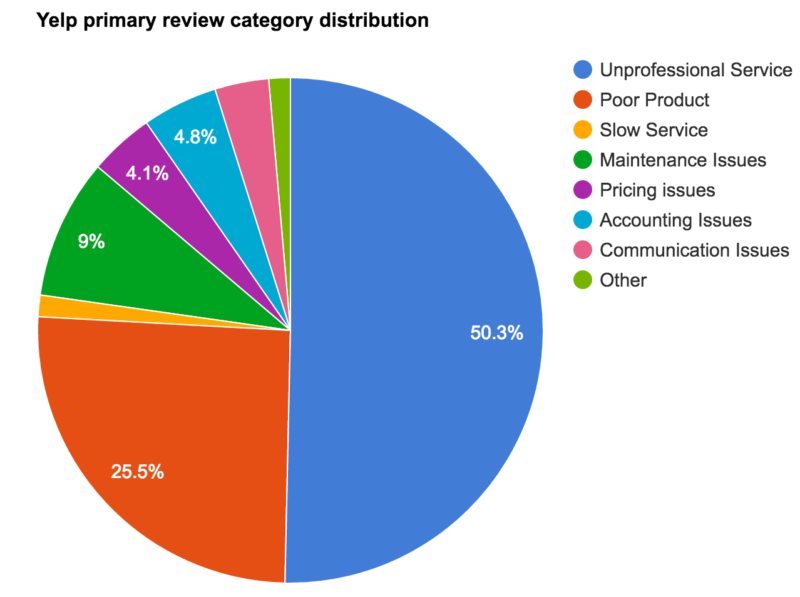Review improvement strategies for franchise and multi-location companies
With local business reviews influencing click-throughs from search (and possibly even local rankings themselves), columnist Brian Patterson notes that large businesses with many locations need to have a strategy for obtaining and managing reviews.

Reviews are an undeniable internet phenomenon. A short 20 years ago, our opinions of businesses were based on advertising, our own experiences and those of friends and family. Now, just two decades later, 92 percent of consumers read online reviews for local businesses, and Googling a company’s name is SOP before doing business with them. Consumer appetite for reviews (and their willingness to write them) is increasing, and Google is weaving reviews into the organic search algorithm.
Every company must face this new reputation reality in some way, and the focus for this article is on businesses who have to be able to address it at scale: multi-location companies and franchises.
We work with many companies who have locations across the US, and through this consulting work, we’ve identified common patterns and trends that allow us to hit the ground running to help each improve their review situation.
The following six steps will help a marketing manager at one of these enterprises build a review improvement strategy.
1. Have a company-wide dashboard with custom metrics
I know, I know — another dashboard, another report. This isn’t sexy, but it is necessary. Depending on the number of reviews your locations receive, you’ll want to set up a standard weekly and monthly report that includes key metrics to help everyone understand how things went over the time period and where they stand overall.
A simple setup is to use a spreadsheet and list all of the locations down column A, and have row values across the top, such as:
- number of positive Google reviews this week;
- number of negative Google Reviews this week;
- number of neutral Google reviews this week;
- overall Google review rating;
- repeat for Yelp (and any other key review platforms);
- total positive Google reviews (repeat for negative and neutral); and
- total positive Yelp reviews (repeat for negative and neutral).
At the bottom of the rows, you can include a simple total line to see how many total reviews you had over the time period, how many reviews you have overall and average scores across the different review channels. Add in some conditional formatting, and you have yourself the basis for a very useful review dashboard.
This type of report is a great place to start, as it helps with awareness and measuring progress. As your review/reputation management program matures, you can begin to layer in more aspects of your reputation to give a fuller picture of how the company appears online. We are fond of boiling it all down to a single number on a 100-point scale, which can easily be used for management reporting.
2. Make it a competition
One of the great things that we found with the type of reporting in #1 is that it naturally shows how each location stacks up against the others. With just some simple sorting, you can see who is doing great each period and who is performing best overall. This information can be used to incentivize locations with some friendly competition.
We have clients who offer yearly prizes, awards and bonuses for the locations and management that perform best in key review categories. We also have clients who factor location reviews into the employee review process. In one case, the regional managers have their own totals and averages for their locations in the review dashboard, and that is used in their assessment.
There are a lot of ways to motivate employees, and factoring reviews into that process may be something to consider for your business.
3. Develop a response approach
Responding to reviews is part art, part science. What you don’t want is each franchisee or location manager to simply apply their own set of personal rules for responding to reviews. Rather, you want to have a standard, thoughtful approach to how reviews will be responded to.
If you want to push this to the extreme, you could try responding to every single review that comes in as Jay Baer advocates in “Hug Your Haters.” Or you might decide to just respond to thoughtful negative and positive reviews. Whatever the case may be, decide what types of reviews you’ll respond to.
Then, you’ll need to define the framework for the response. It should be personal, factual and always end with an invitation for the reviewer to contact you directly via phone or email.
If responses are going to be handled at the location level, then training and the development of sample responses are a best practice to ensure that no responses end up making the company look worse.
4. Ask for reviews
Aside from over-the-top, great customer service (like Zappos and Nordstrom provide), there is no better way to consistently get five-star reviews than to ask satisfied customers for them. I’ve talked in detail about how asking for reviews is an acceptable practice and worth doing, but doing so gets more complex with many locations.
There is no “one-size-fits-all” approach to asking for reviews because every business is unique in its customer touch points. However, there are a few lessons learned that are consistent across almost all companies. They are:
- Do ensure that the customer is fully satisfied before leaving a review.
- Do point customers to specific review platforms based on where positive posts will help the most.
- Don’t roll out a strategy to ask for reviews without providing training to the employees who will be doing it.
Often, employees are eager to start asking for reviews, but first start them off with a natural script and training to follow, so the request doesn’t seem forced.
Additionally, drill home the fact that they must prequalify the customer on satisfaction with a question such as, “Were you fully satisfied with the service you received today?” If the answer is anything other than a resounding “Yes,” hold off on requesting a review, and instead resolve their issues on the spot.
5. Learn from the best (and worst) locations
One of the greatest sources of intelligence and new ideas can come from analyzing the locations that are outliers — either because of stellar or poor reviews.
We always look at the locations that are doing very well and talk with their management and employees about the strategies they are using to achieve success. In many instances, we’ve gained insights that can be applied to every other location.
If a location is doing well on Yelp or Google, be sure to talk with them to understand what they are doing that appears to be working.
6. Graph the negative (and positive) reviews by category
One of the most insightful tasks is to categorize each negative review, then chart them out by frequency. By putting reviews into buckets of major complaint types (specific to the business), we can see what customer pain points occur most frequently and then take action to address them.
The following is a sample chart that shows reviews categorized across a regional multi-location business:
By classifying the data and having it in a structured format (in a spreadsheet), we can also slice and dice it in other ways to identify trends or problem locations.
For example, here are all of the reviews from the pie chart above, but this time viewed over time:
These data visualizations help identify different trends and pain points that can help you root out core customer service issues that are plaguing your online reviews.
Another handy visualization is to chart it out by location, with a special focus on locations with poorer overall scores. We generally start working on those locations first, in triage mode, because their negative scores are likely impacting their bottom line.
With data like this, we have an overall view of the issue and can build customized plans and training for improving the specific issues at each location.
This categorization is a tedious process, so for businesses with thousands of reviews, a statistically significant sample of reviews is enough to build a good picture.
Closing thoughts
How reviews are managed and improved for franchises is unique, just like almost every other aspect of the franchise business model. By taking a centralized approach to improving reviews, a company can make small changes across many locations that can have a big impact.
Start with a dashboard to understand where you are and where you want to be, and then continue to mature the process by adding in other review request and improvement strategies.
Contributing authors are invited to create content for Search Engine Land and are chosen for their expertise and contribution to the search community. Our contributors work under the oversight of the editorial staff and contributions are checked for quality and relevance to our readers. The opinions they express are their own.
Related stories

